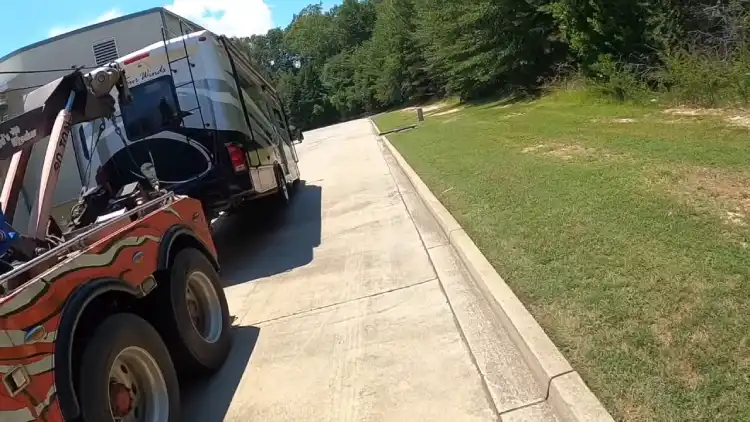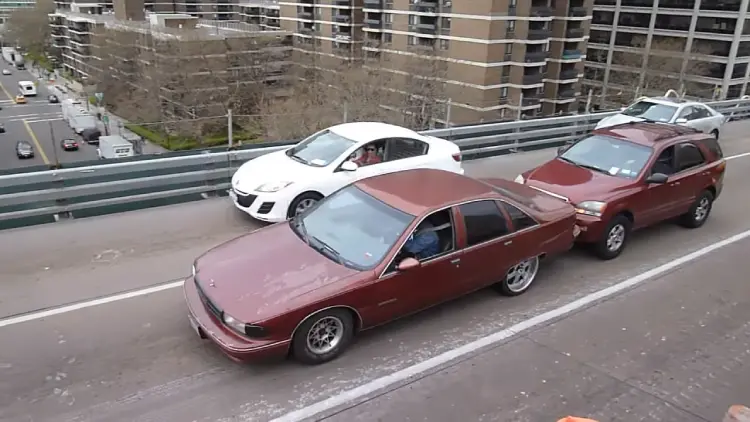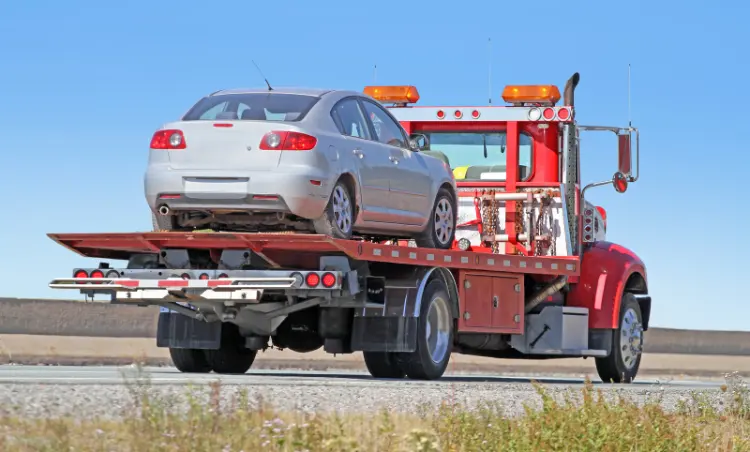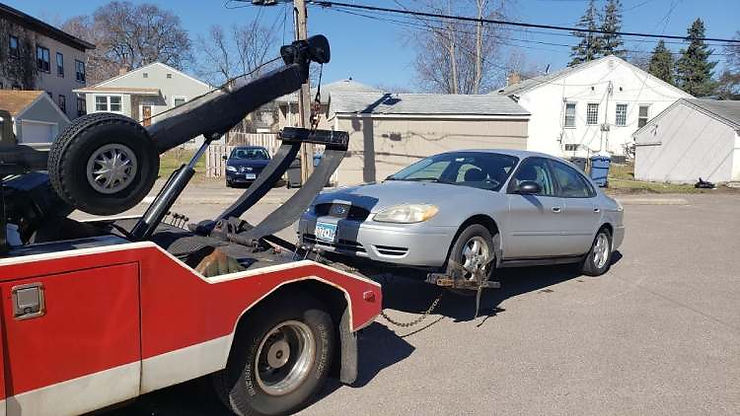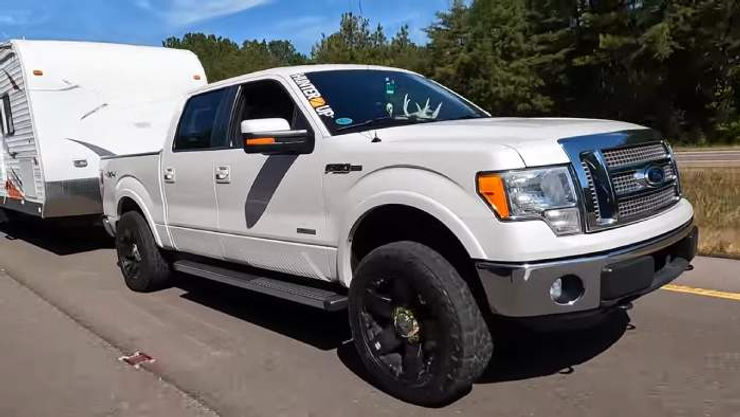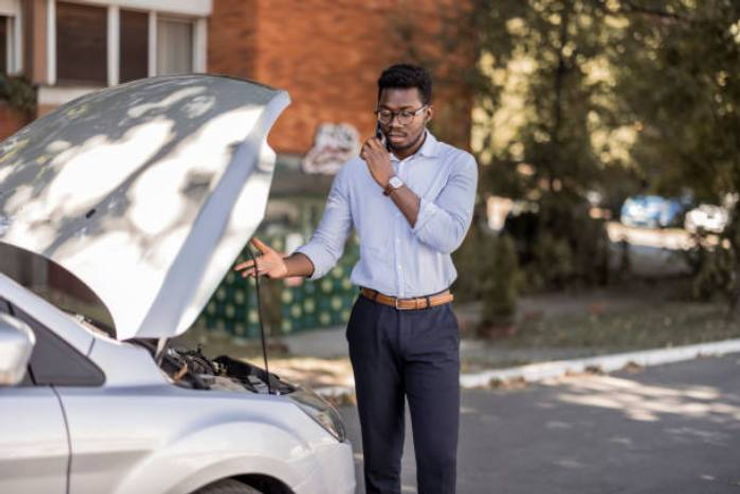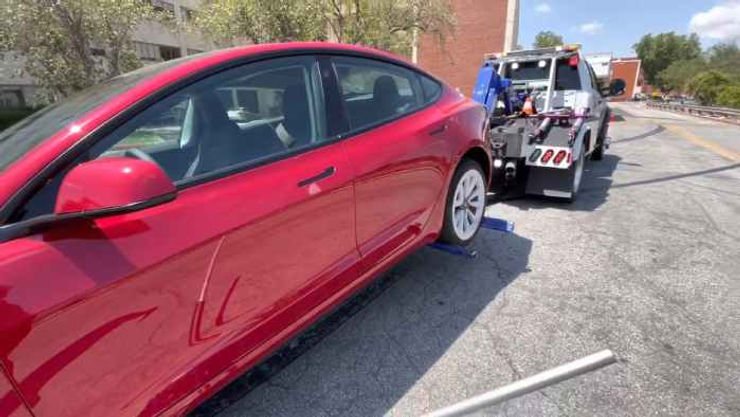If you’re ever unfortunate enough to find yourself stuck on the road with a broken motorhome, then knowing how to tow it safely is essential. As this task involve a great deal of weight and size, hiring professional towing services is highly recommended.
But don’t let yourself be left helpless when this misfortune strikes. Arm yourself with the know-how and stay ready for your next grand adventure.
Depending on the type of motorhome, different methods can be used to safely and securely tow it. For example, Class A motorhomes can be towed using a flatbed trailer, while Class B and C motorhomes require tow vehicles or tow dollies.
To properly tow your broken motorhome, you’ll need to follow several steps, such as positioning your towing vehicle and securing your motorhome with chains or straps. We’ll cover all these steps necessary for proper towing later. So don’t worry. Help will soon arrive.
How to Tow a Broken Motorhome: Simple Steps
Steps for Towing Broken Motorhome With Flatbed Trailer
It’s best to put your broken motorhome, especially a Class A motorhome, on a flatbed trailer for safe and secure towing. You need to take a few steps if you want to tow a broken motorhome with a flatbed trailer.
Step 1: To begin with, check that the trailer you rent is big enough and has the correct weight capacity for your motorhome. Then, park on level ground and use wheel chocks or other stabilization equipment to keep the trailer in place.
Step 2: Once that’s done, attach ramps to the trailer and position them up against the motorhome. You’ll likely need winch cables for this step, so make sure you have those ready as well.
Step 3: When all of this is set up, you can begin winching the motorhome up the ramps onto the trailer. Make sure to do this slowly and steadily.
Step 4: Sudden jerks or movements could cause it to fall off or damage it further. Once your motorhome is loaded onto the flatbed trailer, secure it with chains or straps.
Step 5: Don’t forget to check that all connections are secure and double-check that everything is properly fastened, so nothing comes loose when you’re driving.
Step 6: It’s also essential that you inspect the brakes, lights, and other equipment on the trailer before hitting the road.
Step 7: When you’re at your destination, carefully unload by reversing these steps. Unhook any winches or cables you used during loading by releasing any chains or straps attached to your vehicle.
Step 8: Be mindful of any gaps between the ramp and trailer when taking apart your setup. If too big of a gap forms during unloading, then there’s a chance your motorhome will plummet into an unforeseen disaster.
Step 9: Towing a broken motorhome using a flatbed trailer isn’t difficult. Still, it requires attention to detail for it to be done safely without causing additional damage to either your vehicle or yourself.
By following these steps, you can ensure that your broken motorhome gets where it needs to be without incident while minimizing risk factors along the way.
Towing a Broken Motorhome With a Tow Truck
The tow truck can also tow a broken motorhome, especially if it’s Class B or C. Before you start, ensure that the tow truck is parked in a position that allows for easy access to the broken motorhome.
Once the truck is positioned correctly, attach the winch cable from the tow truck to the front of the broken motorhome. This connection must be firmly secured so that there won’t be any movement during transit.
After that’s done, use the tow truck’s controls to winch the motorhome onto its bed and tie it down with chains or straps to prevent shifting during transit.
As you do this, it’s essential to check all connections and make sure they are correctly fastened before continuing onward.
You should also check on both the brakes and lights of your tow truck before beginning your drive. The proper operation of these devices contributes to road safety.
Once everything has been checked and double-checked, then you can safely drive within speed limits while transporting your broken motorhome.
When you reach your destination, carefully unload it from off of the bed using your winch and controls, just like when loading it earlier.
Use a Tow Dolly to Tow a Broken Motorhome
You can also use a tow dolly. Rent a tow dolly that’s suitable for your motorhome’s weight and size before towing a broken motorhome.
The tow dolly should be capable of supporting both the weight of your motorhome and any additional weight in its cargo. It should have a hitch ball that is correctly sized for your particular tow vehicle.
Before hooking up the broken motorhome, ensure your tow dolly is on level ground and securely anchored with wheel chocks.
Next, you will need to align the tow dolly with the rear of your broken motorhome and then connect them with a hitch ball.
Verify that all connections are secure by checking them several times, as any misalignment can cause damage to both the motorhome and the tow vehicle when driving.
Once all connections are secure, use a winch or other appropriate equipment to pull the front of the damaged motorhome onto the wheels of the tow dolly. Be sure to center the wheels in their respective wheel wells and use straps or chains to secure them in place.
Once everything is hooked up properly and securely fastened, it’s time to check over all components one more time before hitting the road. This includes inspecting brakes, lights, tires, hitches, cables, chains, or straps and making sure there aren’t any loose items that could fall off while in transit.
Drive carefully when driving such large vehicles. Take corners slowly and leave plenty of room between you and other cars. When you arrive at your destination safely, you can begin unloading your broken motorhome from its tow dolly.
Make Towing Your Broken Motorhome Safe & Secure
Ensure that when positioning your motorhome for the tow, you have multiple safety measures in place, such as chains and straps for extra security. You should also ensure your tow vehicle is strong enough to handle the job.
Always enlist professional help if needed, as they have years of experience and can handle any situation with ease. With all this information in mind, we hope you feel much more prepared when it comes time to tow your broken-down motorhome.
